#Vishwamitra
Text
Vishwamitra Maharshi information (Story, history, facts, Menaka marriage) | What is the role of Vishwamitra? | What are the interesting facts about Vishwamitra? | Was Vishwamitra powerful? | How did Vishwamitra became Brahmarshi? - Let's know this!
0 notes
Text
rigvedic seers or sages were political-magician-warriors-come-priests?
MILITARY & POLITICAL STRATEGISTS BEFORE PRIEST
- In the Rigveda, Vishwamitra is described as a warrior and a powerful magician, and he is believed to have provided the Bharata army with various magical weapons and spells that helped them to emerge victorious in the battle. He is also believed to have helped the Bharata king Sudas to formulate a strategy that led to the defeat of the ten kings.Vishwamitra's role in the Battle of the Ten Kings is significant because it highlights the importance of sages and priests in the political and military affairs of the early Vedic period. Sages like Vishwamitra were not only spiritual leaders but also political advisors and military strategists. They played an important role in shaping the social and political landscape of the early Vedic period
LESS RIG VEDIC GODS OVER TIME
- Agastya (**PRE-VEDIC OR NOT?) associated with south/ Tamils and taught Vasishta, who is associated with Bharathas of Kurukshetra, ie. more west/later.
- Vasishta known teaching dharma, karma, etc.
LATER RIGVEDAS
- 1.65-73 written by Parasara, grandson of Vasishta and father of Vyasa, in praise of Agni. Apparently wrote 9.97 in praise of Soma. Also speaker of Vishnu Puranma
A “DASA” “SAGE” honoured earth as a goddess in the rigvedas, it was his ONLY hymn and he’s the ONLY
“Brahmin” with ‘dasa’ in his name before Kalidasa?
Mahidasa was a sage or Rishi who composed hymn 10.148, known as the "Hymn to Earth" or "Prithvi Sukta." This hymn is dedicated to the personification of Earth as a goddess and is considered a hymn of praise to the Earth as a life-sustaining force. It describes various aspects of Earth and its significance in the cosmic order, and it is considered one of the most famous and revered hymns in the Rigveda.
The "Prithvi Sukta" is often interpreted as an expression of reverence and gratitude towards the Earth as a nurturing and life-giving force. It highlights the importance of Earth in ancient Vedic cosmology and expresses the idea of Earth as a goddess to be venerated and respected. Mahidasa is credited with composing this hymn and is considered an important figure in Hindu mythology for his contribution to Vedic literature.
#chatgpt#chat gpt#rig vedas#rigvedas#rigvedic#vedic#rig vedic#hindu#india#south asia#pakistan#indus valley#aryan invasion#vishwamitra#brahminism#brahminization#brahmins
0 notes
Photo
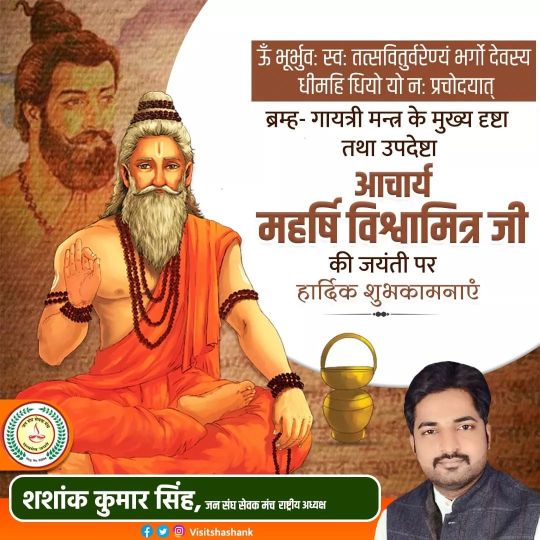
ब्रम्ह- गायत्री मन्त्र के मुख्य दृष्टा तथा उपदेष्टा आचार्य महर्षि विश्वामित्र जी की जयंती पर हार्दिक शुभकामनाएं । महर्षि विश्वामित्र की कृपा आप सबों पर बनी रहें। #vishwamitra https://www.instagram.com/p/CkP7VpuAGDr/?igshid=NGJjMDIxMWI=
0 notes
Photo

#Fun with #Mama #GoluMama #Chocoluv #Chocobear #Choco #Vishwamitra #Party #MamaBhanjalove #MamaBhanja #Awesomebaby #elevenmonthsold #11monthsold #babyboy #babyphotography #photography #unconditionallove #family #11monthbaby #babyphotoshoot #11montholdbaby #elevenmonth #babyphoto #babiesofinstagram #babypose (at Royal Pepper Banquets) https://www.instagram.com/p/Cg7XC-DBXx9/?igshid=NGJjMDIxMWI=
#fun#mama#golumama#chocoluv#chocobear#choco#vishwamitra#party#mamabhanjalove#mamabhanja#awesomebaby#elevenmonthsold#11monthsold#babyboy#babyphotography#photography#unconditionallove#family#11monthbaby#babyphotoshoot#11montholdbaby#elevenmonth#babyphoto#babiesofinstagram#babypose
0 notes
Photo

RAS SCHOOL, RAS - RAJASTHAN
A Graphic & Geometric look at a School building situated in Ras, Rajasthan , India.
Photographer: Dilip Vishwamitra Bhatia
Company/Studio: D Studio N Gallery
INTERNATIONAL PHOTOGRAPHY AWARDS™

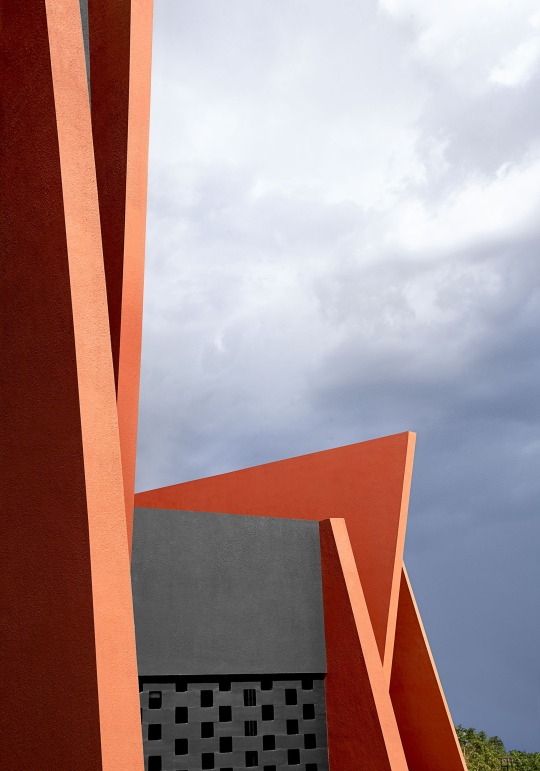



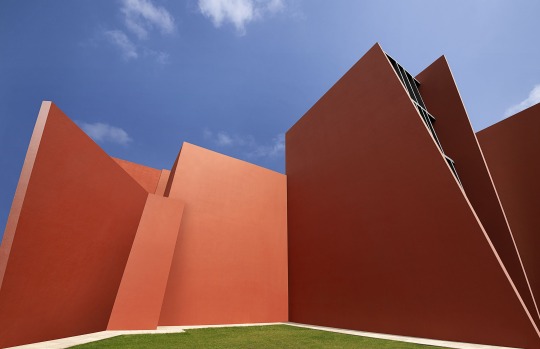
#dilip vishwamitra bhatia#photographer#international photography awards#graphic#geometric#school building#ras#rajasthan#india#architecture
2 notes
·
View notes
Text
who will win first: my desire to do the unalive or my baka sensei's inevitable death by overwork
#lemonade rants#menaka has no hope of seducing vishwamitra because vishwamitra needs an iv drip at this rate to be capable of getting seduced#again#tw: suicide mention#using tiktok lingo was not in my bingo 2023 list but i was not able to bring myself to use the actual word for safety reasons#@ college i need my mentor/crush to stay alive so that I can stay alive pls
1 note
·
View note
Text
Master Of Self Realization - An Ultimate Understanding, Sri siddharameshwar maharaj, part 1 - ch. 9 (pg 126)
Self and non-self.
Anxiety accompanies desire. As long as the mind is full of desire, anxiety will be there. When desire ceases, anxiety is no more. While walking on the street many things are visible, yet we have no attachment to them. However, once the sense of “mine” is conceived, desire arises and one immediately becomes preoccupied with objects.
To feel that something is “mine” is itself bondage. What is truly ours in the physical body? For the body, the air that is inside goes out and the air outside comes in. What belongs to you in this process? In the area of about two feet around the body, there are continuous currents of air. One who can see minutely can be aware of this.
Many special days and festivals are coming and going, and you think that the things in the world are permanent and yours, but you do not see that you really exist prior to all of these objective things. When the perception of objects ends, the desire for the objects also ends, and it does not matter whether objects are existing or not. If you think that some little piece of earth is yours, you immediately become worldly. The mind when dwelling on the Self, is desireless, and when focusing on the physical body as “me” or “mine,” is full of desire.
Strange indeed, is this creation consisting of the five elements. The “One Being” that plays in all bodies is the “AllPervading Universal Self. Understand that “All is Brahman.” The example of the ring and the gold is commonly used. If you consider the ring as Gold, then only the Gold is seen as the substance, but if you look at it as a ring, it is considered as a separate object. Water is water, both in the ocean and the pitcher, but water in the pitcher is separate if you keep the pitcher separate, so do not keep it separate. Know that “All is Brahman.”
Consider all to be your friends, so that there is no duality or dislike in the mind. When you repeat the statement that “All is Brahman,” then why does your attitude not change accordingly? That is because your thinking is warped by the notions of virtue and vice, and you adopt a critical or dualistic attitude. One who pleases you is considered a good person, and the other you consider as bad. However, are there not many others who call that so-called “bad” person, as good? Moreover, to what extent are you yourself good? Are there not some people who take you to be a bad person? Even God is considered in terms of good or bad by many people.
The wise man says that since all are slaves of circumstances (living according to the destiny of the body), how can we differentiate between good and bad people. Circumstances have created the various castes such as carpenters and cobblers, etc. The labels of various occupations have made us think of people as separate. Otherwise, where is the distinction of castes, etc.? Nobody is bad or good. All bodies are subject to circumstances. The stages of childhood, youth, and old-age are there for everyone.
The young man will have not have a white moustache instead of a black one, while the old toothless man cannot gulp down morsels of hard food, etc. In short, do not ridicule others. All are subject to circumstances. One may keep long hair on the head, or wear a beard, it is all a matter of one’s preference. Why should you hate anyone because of such things? Consider the one who criticizes you, or blames you, as a kind person. Keep an open loving attitude towards those who give you a lot of trouble, and remain without enmity. Only then, will you be as Brahman.
Anxiety kills us very early. The one who worries dies with that worry, and hatred is a very heavy burden to bear. Vishwamitra, who was a bachelor and had done a great amount of spiritual practice, became ready even to murder when he went to kill the Sage Vasishtha out of envy and jealousy. It is said that the bag of saffron (a precious delicate tasting spice) become Asafoetida (a pungent spice with strong taste and odor), only because of being in its vicinity. When pride disappears, the thorn that irritates you drops away. Kill pride and then you will yourself become the “Divine Sage,” or “Brahmarishi.” Prostrate before him who hates you. If you decide that someone is bad, then you yourself become bad. One who has no enmity is himself Brahman. To quarrel indicates misunderstanding. The duality of differentiating between sense objects must end. Do not think in terms of hatred or enmity, or good and bad. It is only then that you become as Brahman. Have no enmity towards anyone.
89 notes
·
View notes
Text
A Mémoire dedicated to my girl
@embersariya
Well, I usually write in poetry but sometimes prose is a good way to let out your emotions too.
She is the one who makes me complete. The "better half" as people colloquially say. But I subscribe to age old philosophy and I love the concept of "Ardhanirshwar Shiva". The greatest of all men "Shiva" required his "Shakti" to be complete
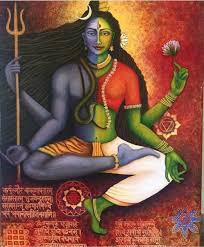
The greatest of all sages Gautama , Vashishta, Vishwamitra will all be remembered with their consorts always. (Ahilya, Arundhati , Rambha respectively)
The greatest of all conquerors Indra (the king of heavenly planets) will be remebered with his "shakti" Indrani.
The greatest of all diplomats "Kusha" will be remembered with his partner.
Great Men have great women in their lives. There is no Julius ceaser without Calpurnia. No Napolean without Josephine and never will be.
And I wish to join the ranks of these great men with you by my side.
For the concluding remarks
"And We created you in pairs" - وَخَلَقْنَاكُمْ أَزْوَاجًا
The Holy Quran 7.8
Signing off KSR
14 notes
·
View notes
Text
Vishwamitra Maharshi information (Story, history, facts, Menaka marriage) | What is the role of Vishwamitra? | What are the interesting facts about Vishwamitra? | Was Vishwamitra powerful? | How did Vishwamitra became Brahmarshi? - Let's know this!
0 notes
Note
Hi! I have a question regarding the usage of astras in Hindu mythology. How did a sage choose who to pass down a particular Astra to? Did it depend on caste, with only Kshatriyas and Brahmins allowed to use astras, which is why there was such a great uproar when Karna, believed to be of low caste, was able to summon a variety of astras? But that still doesn't explain the discrepancy between the number of astras a particular Kshatriya or a Brahmin could summon. Like in the Mahabharata, Arjuna, Karna, Bheeshma, Drona, etc lead the pole with respect to number of astras known, and other warriors don't know as many astras as these people do. Which is confusing, because if only Kshatriyas and Brahmins could use astras, then ideally shouldn't all members of both these castes know the same amount of astras? I've seen some sources suggest that astras were handed down only following the establishment of a pupil's character, irrespective of the pupil's caste, because these weapons were so destructive and couldn't just be entrusted to anyone. This explanation does work, except we've already seen this condition violated in the Mahabharata, and without repurcussions to the offender! Drona refuses to teach the Brahmastra to Karna, but caves in to one single pair of puppy-eyes from Ashwatthama, despite knowing he didn't really deserve this knowledge and couldn't be trusted to use it responsibly. And Ashwatthama does go on to use the Brahmastra for less than noble purposes! So how exactly did any sage choose who to pass down an Astra to?
This is an excellent question, and this is my best understanding:
So, for all intents and purposes, astras are more equivalent to cheat-codes for a video game rather than physical weapons (which...you probably already knew lol). And just so, you could end up with an astra from a variety of sources:
direct from the source (ie, from the god who possessed it. Arjuna is the best example when he picks up special weapons from Shiva and Indra after meditating long enough to earn it)
from your teacher, buuut only if he liked you enough (and it was within his rights to pass it on or deny it for any random reason! Like you said, Drona gives it to Ashwattama and but refuses to teach Karna not because of caste, but because he wants Arjuna to be the best. And as annoyed as Karna is, his only options within that society is to go elsewhere)
from a random rishi you pleased/impressed/helped (Rama gets pretty much every divine weapon there is from Vishwamitra after helping to protect his sacrifice
So there doesn't seem to have been any quality control on who actually got the astras, just who you ran into; which is also how villains as well as heroes all seem to possess them. Until the Mahabharata war, it seems to have been chaos--until then the majority of the people who posessed the weapons either died before htey could pass it on any further, or (horrified by the damage) presumably decided to never to do so anymore. Which arguably might have been a secondary goal on Krishna's part.
#hindu mythology#astras#questions#this is my interpretation at least but chime in friends if you guys know any other explanations!!!
17 notes
·
View notes
Text
Why could Ravana, who lifted Mount Kailash, not lift the bow in Mata Sita's Swayamvara?
Arrogant Ravana, who lifted Mount Kailash, could not lift the bow in Sita Swayamvar because of this. Because Ravan did not have any sense of service.
Such was the bow: Lord Shiva's bow was very powerful and miraculous. The bow that Shiva had made, clouds used to burst and mountains used to move. It seemed as if an earthquake had occurred. This bow was very powerful. All the three cities of Tripurasura were destroyed with one of his arrows. The name of this bow was Pinaka. After the end of the period of gods and goddesses, this bow was handed over to Devraj Indra.
The gods gave it to Devraj, the ancestor of King Janak. Nimi's eldest son Devraj was among the ancestors of King Janak. Shiva-Dhanush was safe with King Janak as his heritage. No one had the ability to lift this giant bow of his, but Lord Rama lifted it and climbed its string and broke it in one stroke.
In Shri Ram Charitmanas there is a chapai:-
"उठहु राम भंजहु भव चापा, मेटहु तात जनक परितापाI"
Meaning- Guru Vishwamitra, seeing Janakji very upset and disappointed, tells Shri Ramji that O son Shriram, get up and break this bow in the form of "Bhav Sagar" and take away the pain of Janak.
There is a word in this chaupai 'Bhav Chapa' which means that to lift this bow, it was not power but love and nirankar that was required. It was an elusive and divine bow. Divine qualities were needed to lift it. No arrogant person could lift him.
That's why Ravana could not lift the bow.
Ravana was an arrogant man. He could lift Mount Kailash but not the bow. He could not even move the bow. The forest had gone to Dhanush with the pride of an arrogant and powerful person. The more Ravana used to apply power to that bow, that bow used to become heavier. There all the kings were defeated by their power and arrogance.
Lord Rama raised the bow in a moment.
When Lord Shri Ram's turn came, he understood that it was not an ordinary bow but the bow of Lord Shiva. That's why first of all he bowed down to Dhanush. Then he circumambulated the bow and paid him full respect. The heaviness of the bow automatically disappeared in front of Lord Shriram's humility and purity and he lifted that bow with love and climbed its string and as soon as he bowed it, the bow broke on its own.
It is said that just as Sita used to lift the bow without exerting any force by meditating on Lord Shiva, in the same way Shriram also tried to lift the bow and succeeded.
Jai Shri Ram….
#ramayana#ramayan#Ramcharitmanas#valmiki ramayan#ram#vedas#vedic astrology#Vedic Jyotish Online#vedic astro observations#astrology numerology vedicastrology#vedanta#yajurveda#rigveda#rg veda#spiritual enlightment#spirituality#spiritual development#spiritualawakening#enlightenment#enlightenyourself#enlightenedconsciousness#enlightenedbeings
6 notes
·
View notes
Text

Visvamitrasana is the pose named after a king-turned-sage Visvamitra. The meaning of Vishwamitra is; Visva means ‘the world’, Mitra means ‘a friend’. Sage Visvamitra is known for his yogic power of compassion towards all the people he used to meet. This pose gives an opening to the heart i.e. compassion center in our body, so Visvamitrasana is dedicated to sage Vishwamitra.
This asana not just provides strength and vigor, which utilizes the prana to nourish the life but also helps in establishing a balance within. So, the practitioner is able to tune in with their surroundings and react in a friendly manner to keep humanity alive for the ages.
#visvamitrasana#yoga#yogapractice#yogainspiration#yogachallenge#yogapose#yogateacher#yogagirl#armbalance#igyoga#yogaeverywhere
4 notes
·
View notes
Text
Do You Know
Do You Know? Our Indian mythology has:-
One Divine Soul (Creator of Universe, Paramatma)
2. Two Greatest Epics ( Ramayana & Mahabharata)
3. Tridevs, Three Lords ( Lord Brahma, Lord Vishnu & Lord Shiva)
4. 4 Yugas ( Satya Yuga, Treta Yuga, Dvapara Yuga, Kalki Yuga)
5. Five Elements (Fire, Water, Wind, Earth, Space)
6. Six Shastras (Nyaya, Sankhya, Yoga, Vaisheshika, Purva Mimamsa & Uttara Mimamsa)
7. Sapt Rishi, 7 Maha Rishis (Vashishtha, Bharadvaja, Gautama, Jamadagni, Kashyapa, Vishwamitra, Agastya)
8. Asht Dev, Eight Devas (Lord Indra, Lord Yama, Lord Varurya, Lord Kubera, Lord Agni, Lord Niqti, Lord Vayu & Lord Isana)
9. Nau Devi, Nine Goddess (Goddess Shailputri, Goddess Brahmcharini, Goddess Chadraghanta, Goddess, Kushmanda, Goddess Skandmata, Goddess Katyayani, Goddess Kaalratri, Mahagauri and Goddess Siddhidatri)
10. Dashavatar, Ten Incarnation for Lord Vishnu ( Matsya Avatar, Koorma Avatar, Varaha Avatar, Narasimha Avatar, Vamana Avatar, Parshurama Avatar, Rama Avatar, Krishna Avatar, Buddha Avatar & Kalki Avatar)
So do you know about it???
3 notes
·
View notes
Text
Vishwamitra is super sus
5 notes
·
View notes
Text
The Ramayana is one of the two great epics of India, attributed to the sage Valmiki. Composed in ancient Sanskrit, it narrates the life and adventures of Prince Rama of Ayodhya, embodying the virtues of dharma (righteousness) and the struggle between good and evil. This epic poem has profoundly influenced art, culture, and religion in the Indian subcontinent and Southeast Asia, presenting complex characters and intricate plot developments that explore various human and divine themes.
### The Narrative Structure
The Ramayana consists of seven kandas (books), which detail the birth, youth, adventures, and trials of Rama and his companions. These books are the Bala Kanda, Ayodhya Kanda, Aranya Kanda, Kishkindha Kanda, Sundara Kanda, Yuddha Kanda, and Uttara Kanda.
### Key Characters
1. **Rama** - The protagonist of the epic, Rama is the eldest son of King Dasharatha of Ayodhya and a prince known for his unwavering commitment to righteousness. He is considered an avatar of the god Vishnu.
2. **Sita** - Rama's wife and the daughter of the earth goddess, Bhumi. Sita is revered for her fidelity and virtue.
3. **Lakshmana** - Rama’s devoted brother who chooses to accompany him into exile.
4. **Hanuman** - A devout follower of Rama and one of the central characters in the epic. Hanuman is a vanara (monkey god) who plays a crucial role in the search for Sita.
5. **Ravana** - The main antagonist, Ravana is the ten-headed king of Lanka who abducts Sita, setting off the main conflict in the story.
6. **Dasharatha** - The king of Ayodhya and father of Rama.
7. **Bharata and Shatrughna** - Rama’s other brothers, who also play significant roles in the epic.
### Plot Overview
**Bala Kanda**
This book begins with the divine origins of Rama, describing how the gods requested Vishnu to incarnate as a mortal to defeat the demon king Ravana, who had become invincible. Rama is born to Queen Kausalya after King Dasharatha performs a sacred rite for progeny. The narrative follows Rama's childhood and his training under the sage Vishwamitra, where he earns divine weapons and slays demons.
**Ayodhya Kanda**
Rama is to be crowned king, but Queen Kaikeyi, one of Dasharatha's wives, demands that her son Bharata be made king instead and Rama be exiled for 14 years. Bound by a previous vow, Dasharatha grants her wishes. Rama accepts his exile, and Sita and Lakshmana join him. Dasharatha dies from the agony of separation shortly after their departure.
**Aranya Kanda**
In the forest, the trio encounters various sages and confronts demons. Shurpanakha, a demoness in love with Rama, attacks them but is repelled. In retaliation, Ravana abducts Sita, aided by the deception of Maricha, a demon who transforms into a golden deer.
**Kishkindha Kanda**
Rama and Lakshmana meet Hanuman and the banished monkey king Sugriva. After Rama helps Sugriva regain his kingdom from his brother Vali, Sugriva and his monkey forces vow to find Sita.
**Sundara Kanda**
Hanuman leaps to Lanka, discovers Sita in captivity, reassures her, and proves Rama’s intent to rescue her by showing her Rama’s ring. Hanuman's burning of Lanka marks his escape back to Rama with Sita's whereabouts.
**Yuddha Kanda**
Rama, aided by an army of monkeys, builds a bridge to Lanka. A great battle ensues, during which Rama slays Ravana and liberates Sita. To prove her chastity, Sita undergoes a trial by fire, emerging unscathed.
**Uttara Kanda**
This final book covers Rama’s return to Ayodhya, his coronation, and his reign. It also deals with the banishment of Sita following the populace's gossip about her purity, her subsequent refuge in the hermitage of Valmiki, and the birth and upbringing of her twin sons, Lava and Kusha. The epic concludes with Rama's departure from the earth, marking the completion of his divine mission.
### Themes and Conflict
The central conflict of the Ramayana is the struggle between good (Rama) and evil (Ravana), encapsulated in the abduction of Sita and her rescue. The narrative explores themes of duty, righteousness, loyalty, the ideal rulership, and the complexities of moral decisions. Each character embodies different aspects of human and divine nature, making the Ramayana a rich tapestry of moral and philosophical teachings.
In summary, the Ramayana is not only a gripping narrative of an epic quest and cosmic battle but also a profound meditation on the duties and dilemmas faced by individuals and leaders. Its enduring popularity attests to its deep emotional and ethical resonance across generations and geographies.
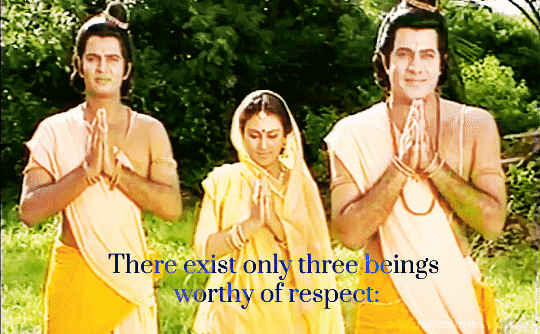
0 notes
Text
''The most beautiful temple of Rajasthan, Brahma Temple, Pushkar''
The Brahma Temple is a special place for Hindus. It’s in Pushkar, India, dedicated to Lord Brahma, who they believe made the world. This temple is really old, around 2000 years! Long ago, there were lots of temples in Pushkar, but many got destroyed ages ago. The Brahma Temple was rebuilt later.
Legend has it that a wise guy named Vishwamitra built the temple after a big ceremony for Lord…
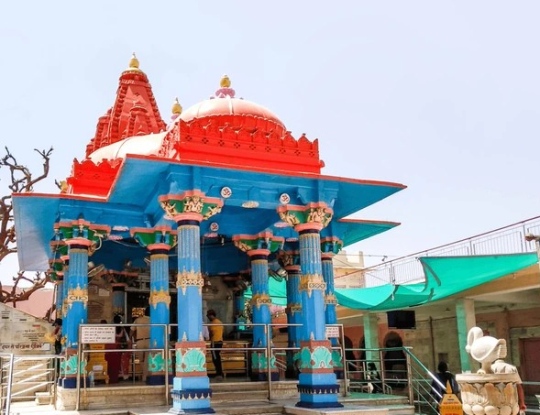
View On WordPress
0 notes